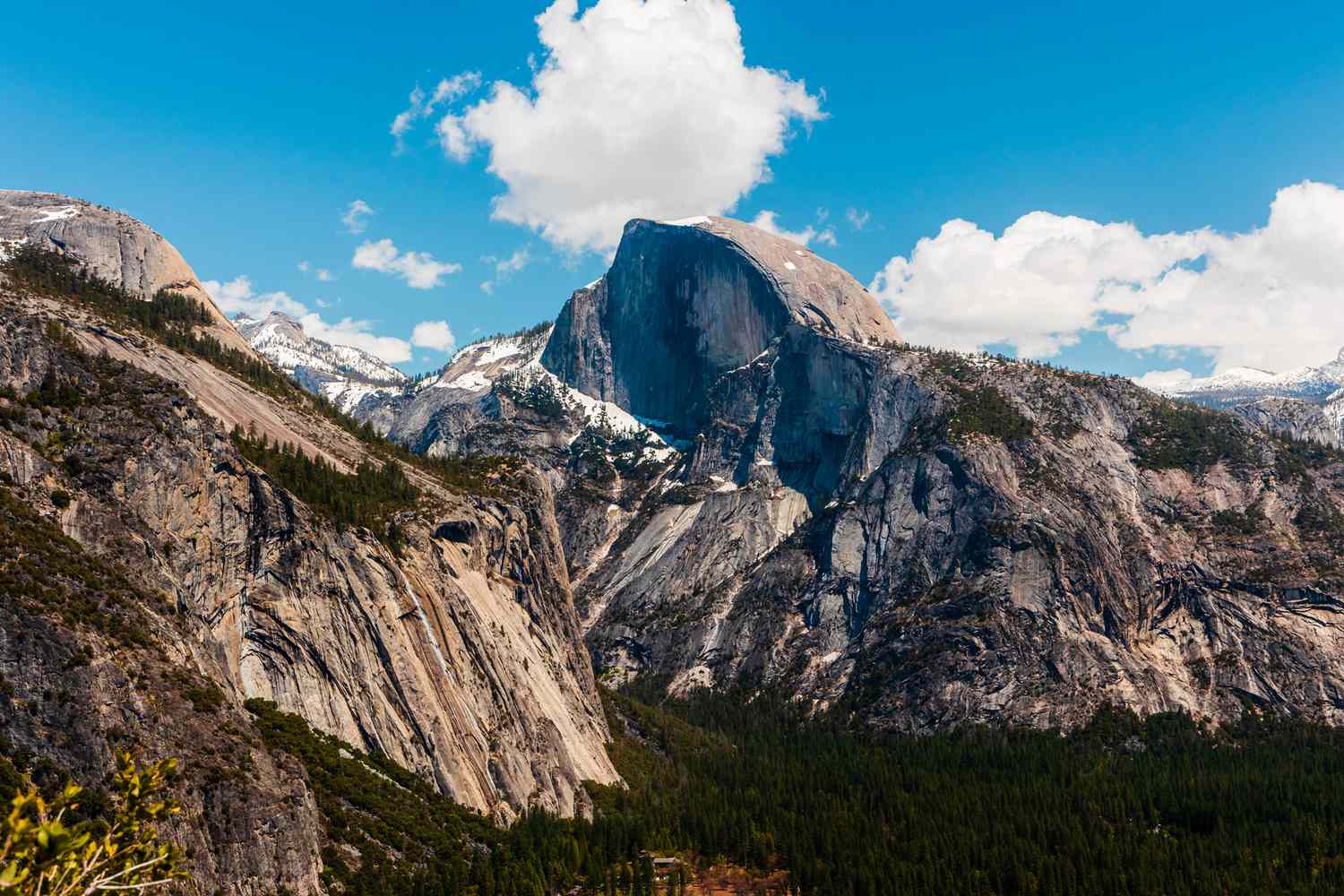:max_bytes(150000):strip_icc():format(jpeg)/TAL-lead-image-NPTHISSUMMER0725-a84e2bfc7c53455b878ac491234518d0.jpg)
- Some national parks are seeing record visitor numbers in 2025 amid major staffing cuts, leading to limited services.
- Timed-entry tickets, planning ahead, and being flexible are essential for a smooth summer park visit.
- Visitors should research exactly what services are available—and what services have been limited or cut—before they visit the national parks this summer.
Last month, I embarked on the adventure virtually every travel advisor warns against: planning a last-minute national parks road trip during the peak summer season. From reservations to closures due to staffing shortages, it’s been quite the odyssey.
According to the National Parks Conservation Associationthe National Park Service has lost nearly one-quarter of its permanent staff since the Trump administration took office in January. This is a record low for staff numbers over the past two decades, and it comes at a trying time. National park interest is soaring, with 331.9 million recreation visitors in 2024—that’s an uptick of 6.36 million visits since 2023, per the NPS.
“Summer is peak season, and current data and on-the-ground reports confirm high-season travel to U.S. national parks in mid-2025 has been unusually crowded,” says Bogdana Hart, North America regional operations manager for G Adventureswhich runs group trips across these public lands. “Travelers planning national park getaways for late summer into fall 2025 should be prepared for a mix of large crowds, limited services, and more logistics than usual.”
I can attest. Mapping a late July road trip that includes Rocky Mountain, Great Sand DunesArches, Canyonlands, and Capitol Reef national parks has put my travel planning skills to the test.
My biggest lesson? Visiting the national parks this summer is still possible, but it requires research, patience, and flexibility.
Jon Mtratrisch / Travel + leisure
How are staffing shortages affecting national parks?
Slashed full-time and seasonal staff numbers mean fewer resources for park visitors. “Ranger-led programs, tours, and visitor center hours are limited, with fewer educational activities available,” says Hart. “Park services like restrooms, campgrounds, and shuttle systems are also strained. Some shuttles are running reduced schedules, restrooms aren’t cleaned as often, and trash pickup isn’t always keeping up with the volume of visitors.”
The changes vary by park, so it’s important to research available tours and unexpected closures before you visit. Keep an eye on the park websites or download the National Park Service app to have the calendar of guided tours handy. Consider following the parks on social media, too, as many post real-time updates and scheduling changes.
If you’re heading out on a hike or into the backcountry, go above and beyond with preparation. “Staffing shortages mean fewer rangers, closed visitor centers, and minimal amenities, so self-sufficiency is key,” says Hart. “Bring food, water, and navigation tools. Patience and flexibility are essential for a smooth trip.”
How crowded are national parks this year?
As always, crowd numbers depend on which park you’re visiting. In a tough-to-reach destination like Isle Royale or Lake Clark—two of the country’s least-visited national parks—you may not experience throngs of travelers. But the popular parks are a different story. Getaways like Yellowstone, Glacierand Zion are already seeing record or close-to-record visitation numbers, according to the NPCA.
“It’s definitely feeling busier than usual,” says Hart, noting the team’s tour leaders report that, while there is congestion, it’s most noticeable in the most popular areas.
“I don’t think Old Faithful will ever feel ‘empty’ around a summer geyser eruption, so if that’s something you want to see, just be prepared to deal with some crowding, and please be patient and polite with park staff about it,” says G Adventures guide Megan Chinworth. “Pick trails and campsites further down on the recommended lists of things to do, and don’t forget about the other sites managed by the NPS that are not national parks.”
Do I need a timed-entry ticket to visit national parks?
Timed entries and reservations are among the many ways the NPS is tackling overcrowding. This makes impromptu park-hopping trickier for last-minute travelers like me, but, after reading the fine print, the systems aren’t as cumbersome as they sound.
Popular parks like Arches and Rocky Mountain have initiatives where travelers sign up to visit during certain windows to minimize congestion during peak late morning to afternoon hours.
These specifications vary by park—check out this NPCA guide for tips on navigating each timed-entry program—but in most cases, the reservation solely determines when you can enter the park to avoid traffic jams and parking-lot congestion. You can nab your time slot either weeks to months in advance, as well as the day before; again, the particulars vary by park.
And note that many timed entries apply specifically to peak hours. If you visit in the early morning or evening, or at night for stargazingyou can often still enjoy a last-minute park trip. (Make sure to cross-check the park’s entry rules and hours before you go.)
Taylor McIntyre/Travel + Leisure
How far in advance should I plan a national park trip?
To avoid hassle and missing out on your dream national park hotelsplan your summer park trips around three to six months in advance, says Hart. “Campsites, lodging, and permits book up fast, sometimes the day they’re released.”
Some of the most popular park experiences, such as Angels Landing at Zion National Park, require permits. If you have your heart set on an experience, research the participation details well before your trip.
And if planning your national parks visit gets too cumbersome, you can also join a multi-day group tour and have someone else handle the logistics.
How can I protect the parks while I visit?
Overcrowding affects more than the travel experience. It can irreversibly damage our public lands. That’s why it’s more important than ever to minimize your footprint and follow Leave No Trace principles. This includes staying on designated trails, packing out all that you carry in, and never feeding or approaching wildlife. “It’s also important to respect park rules, including permits, timed entries, and closures, as these help safeguard fragile areas,” Hart says.
Additionally, remember fire safety. “It is very important, especially in the peak of summer when vegetation is dry, to be fire-smart and not make fires if they are not explicitly allowed,” says Hart.
And, if you have a national park or NPS site in your hometown, consider joining a volunteer cleanup or trail maintenance team to do your part to protect America’s best idea.





